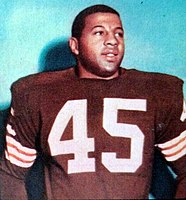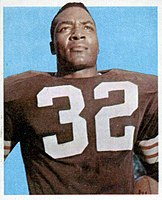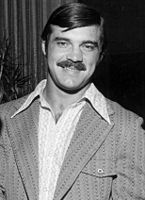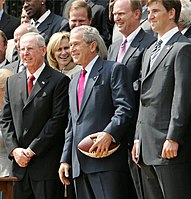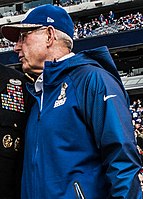Syracuse Orange football
| Syracuse Orange football | |||
|---|---|---|---|
| |||
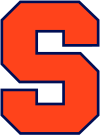 | |||
| First season | 1889 | ||
| Athletic director | John Wildhack | ||
| Head coach | Fran Brown 1st season, 6–2 (.750) | ||
| Stadium | JMA Wireless Dome (capacity: 42,784) | ||
| Year built | 1980 | ||
| Field surface | FieldTurf[1] | ||
| Location | Syracuse, New York | ||
| NCAA division | Division I FBS | ||
| Conference | ACC (2013–present) | ||
| Division | Atlantic (2013–2022) | ||
| Past conferences | Big East (1991–2012) Independent (1889–1990) | ||
| All-time record | 745–578–49 [2] (.561) | ||
| Bowl record | 16–11–1 (.589) | ||
| Claimed national titles | 1 (1959) | ||
| Conference titles | 5 (1996, 1997, 1998, 2004, 2012) | ||
| Rivalries | Pittsburgh (rivalry) West Virginia (rivalry) Penn State (rivalry) Colgate (rivalry) | ||
| Heisman winners | Ernie Davis – 1961 | ||
| Consensus All-Americans | 20[3] | ||
| Current uniform | |||
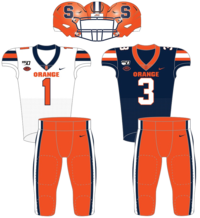 | |||
| Colors | Orange[4] | ||
| Fight song | Down the Field | ||
| Mascot | Otto the Orange | ||
| Marching band | Syracuse University Marching Band | ||
| Website | Cuse football | ||
The Syracuse Orange football team represents Syracuse University in the sport of American football. The Orange compete in the Football Bowl Subdivision (FBS) of the National Collegiate Athletic Association (NCAA) as members of the Atlantic Coast Conference (ACC). Syracuse is the only Division I FBS school in New York to compete in one of the Power Four conferences.
The Orange play their home games in the JMA Wireless Dome, referred to as the JMA Dome on the university's campus in Syracuse, New York.[5] The stadium is also known as "The Loud House."
Formed in 1889, the program has amassed over 740 wins and has achieved one consensus national championship in 1959, defeating the Texas Longhorns in that season's Cotton Bowl. Syracuse has had 2 undefeated seasons, 5 conference championships since 1991, and has produced a Heisman Trophy winner, over 60 first team All-Americans, 18 Academic All-Americans and over 240 NFL players.[6] Syracuse has had 18 members inducted into the College Football Hall of Fame, 2nd-most in the ACC, including former players Ernie Davis, Tim Green, Don McPherson, Art Monk and former coaches Vic Hanson, Ben Schwartzwalder, and Dick MacPherson.[7] The Orange boast 8 inductees in the Pro Football Hall Of Fame, tied for the 4th-most of any school, including Jim Brown, Marvin Harrison, Larry Csonka, and Floyd Little.[8]
The Orange have 28 bowl appearances, 10 of which are among the New Year's Six Bowls. Syracuse has finished in the Final Top 25 rankings 21 times in the national polls, and finished in either the AP or Coaches Polls a combined 35 times since 1952. Syracuse has appeared in over 200 AP Polls including 7 weeks at AP number one.
History
[edit]Early history (1889–1948)
[edit]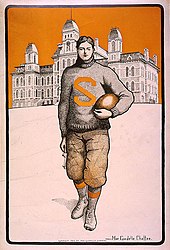
Syracuse played its first football game on November 23, 1889,[9][10] and achieved its first success in the 1890s and 1900s. With the construction of "state-of-the-art" Archbold Stadium in 1907, Syracuse rose to national prominence under College Football Hall of Fame coach Frank "Buck" O'Neill. The 1915 squad garnered a Rose Bowl invitation that the school declined, having already played on the West Coast that season. In 1918, John Barsha (born Abraham Barshofsky) was co‐captain of the 1918 Walter Camp All‐America football team.[11]
The 1920s had continued success with teams featuring two-time All American Doc Alexander and star end Vic Hanson. Vic Hanson was an American football player and coach, basketball player, and baseball player. A three-sport college athlete, he played football, basketball, and baseball at Syracuse in the 1920s, serving as team captain in all three sports. The Watertown, New York native was named a Basketball All-American three times—in 1925, 1926, and 1927—was named the Helms Foundation College Basketball Player of the Year and was a consensus selection to both 1925 and 1926 College Football All-America Teams. Hanson is one of only two individuals who are members (Amos Alonzo Stagg being the other) of both the Basketball Hall of Fame and the College Football Hall of Fame and the only one inducted into the Basketball Hall of Fame, the College Basketball Hall of Fame and the College Football Hall of Fame. He later coached the team from 1930 to 1936.

In the 1930s, Syracuse and nearby Cornell University were among the first collegiate football teams to include African-American players as starting backfield players. Wilmeth Sidat-Singh was an African-American basketball star player for DeWitt Clinton High School. He received an offer of a basketball scholarship from Syracuse University and enrolled in 1935. While playing an intramural football game, an assistant football coach noticed his talent and asked him to join the football team. Sidat-Singh starred for Syracuse, playing a position equivalent to modern-day quarterback. In that era, when games were played in Southern segregation states, African-American players from Northern schools were banned from the field. Because of his light complexion and name, Sidat-Singh was sometimes assumed to be a "Hindu" (as people from India were often called by Americans during this time). However. shortly before a game against Maryland, a black sportswriter, Sam Lacy wrote an article in the Baltimore Afro-American, revealing Sidat-Singh's true racial identity. Wilmeth Sidat-Singh was held out of the game and Syracuse lost that game 0–13. Olympic track athlete Marty Glickman, who played football for Syracuse, believed athletic director Lew Andreas was a bigot who occasionally used a disparaging term for Blacks; the 18-year-old Glickman thought Andreas should have stood up for Sidat-Singh (Glickman also faulted himself for not standing up for Sidat-Singh).[12] In a rematch the following year at Syracuse, Sidat-Singh led the Orange to a lopsided victory (53–0) over Maryland. In 2005, Syracuse University honored Wilmeth Sidat-Singh by retiring his basketball jersey number.[13] On Saturday, Nov. 9, 2013, the University of Maryland publicly apologized to surviving relatives from the Webb family at a ceremony during a football game with Syracuse University.[14]
Ossie Solem coached at Syracuse from 1937 to 1945. During his tenure at Syracuse, he tutored a young assistant coach named Bud Wilkinson, who went on to lead the Oklahoma Sooners to win three national championships.
Ben Schwartzwalder era (1949–1973)
[edit]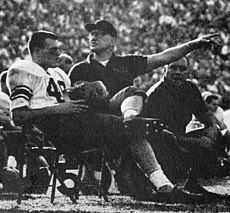
The late 1930s and 1940s had a decline in fortunes that began to reverse when Ben Schwartzwalder took over as head coach in 1949.[15] Syracuse made its first bowl appearance in the 1953 Orange Bowl,[16] followed by appearances in the 1957 Cotton Bowl[17] and the 1959 Orange Bowl.[18]
Jim Brown (a high school standout from Manhasset, New York),[19][20] considered to be one of the greatest running backs of all time, as well as one of the greatest players in NFL history,[21] was a consensus first-team All-American in 1956, finished fifth in the Heisman Trophy voting and set school records for highest season rush average (6.2) and most rushing touchdowns in a single game (6). In the Cotton Bowl, Brown rushed for 132 yards, scored three touchdowns, and kicked three extra points, but a blocked extra point after Syracuse's third touchdown was the difference as TCU won 28–27.[22]
In 1959, Syracuse earned its first consensus national championship, finishing No. 1 in both the AP and Coaches' Polls, following an undefeated season (11–0) and Cotton Bowl Classic victory over No. 4 Texas. The team featured sophomore running back Ernie Davis of Elmira, New York, who went on to become the first African American to win the Heisman Trophy in 1961,[23] and All-American tackle Ron Luciano, who eventually become a prominent Major League Baseball umpire. Davis was slated to play for the Cleveland Browns in the same backfield as Jim Brown, but died of leukemia before being able to play professionally. Syracuse remained competitive through the 1960s with a series of All-American running backs, including Floyd Little and Larry Csonka (both inductees in the Pro Football Hall of Fame).[24][25]
Schwartzwalder produced 22 straight years of non-losing football, took the Orange to seven bowls, won the Lambert-Meadowlands Trophy (to recognize the Eastern champion in Division I FBS) four times: 1952, 1956, 1959, 1966; and won the national championship in 1959. He developed some of the most impressive running backs the game has ever seen - Jim Brown, Ernie Davis, Jim Nance, Floyd Little and Larry Csonka. Orange teams outrushed opponents by more than 22,000 yards under Schwartzwalder. He retired as Syracuse's head coach after the 1973 season, which was Syracuse's third consecutive losing season.[26] Schwartzwalder left Syracuse with a 153–91–3 record.[27]
In 1969, a group of nine African American student-athletes boycotted Syracuse University's football program to demand change and promote racial equality. Popularized erroneously in 1970 by the media as the “Syracuse 8,” the nine students behind the boycott were Gregory Allen, Richard Bulls, Dana Harrell, John Godbolt, John Lobon, Clarence “Bucky” McGill, A. Alif Muhammad (then known as Al Newton), Duane Walker, and Ron Womack.[28] The student athletes drafted a list of four demands, three of which were advocating for the betterment for all student athletes at the university, were access to the same academic tutoring as their white teammates; better medical care for all team members; starting assignments based on merit; and racially integrating the coaching staff, which had been all white since 1898.[29]
-
-
RB Jim Brown,
Pro Football Hall of Famer, played at Syracuse from 1954–1956 -
RB Larry Csonka,
Pro Football Hall of Famer, played at Syracuse from 1965–1967
Frank Maloney era (1974–1980)
[edit]Michigan assistant coach Frank Maloney was hired as Schwartzwalder's replacement.[30] Maloney's tenure at Syracuse was marked by inconsistency.[31] The fan base turned on him as the Orange failed to achieve the national status they had enjoyed under Schwartzwalder. Maloney's program was also limited by archaic facilities.[32] Archbold Stadium, Syracuse's home field since 1907, was in need of replacement.[32] Nonetheless, Maloney did recruit a number of future NFL stars such as Joe Morris and Pro Football Hall of Fame member Art Monk.[33]
Maloney was the subject of criticism, not only from the fans and alumni, but also from the 1959 national championship team, members of which started a campaign calling for his ouster.[34] Ironically enough, this call from program alumni came during the 1979 season, Maloney's best at Syracuse, when the Orangemen qualified for the Independence Bowl, beating McNeese State. After coaching the Orangemen for seven seasons and presiding over the opening of a new stadium, the Carrier Dome (renamed in 2022 the JMA Wireless Dome), in 1980, Maloney resigned.[35]

Dick MacPherson era (1981–1990)
[edit]Dick MacPherson was hired as the head coach in 1981[36] and after several mediocre seasons, fans wanted MacPherson fired, coining the phrase, "Sack Mac".[37]
However, the fans' opinion of Coach MacPherson changed when the program returned suddenly to national prominence in 1987 with an undefeated 11–0 regular season record.[38] The team featured Maxwell Award-winning quarterback Don McPherson and fullback Daryl Johnston.[39] The team missed an opportunity to play for the NCAA Division I-A national football championship, because both Oklahoma and Miami also finished undefeated that year and finished higher in the polls.[40] Instead, the team faced Southeastern Conference champion Auburn University in the Sugar Bowl.[41] The game ended in a 16–16 tie when Auburn kicked a late field goal rather than trying for a game-winning touchdown.[42] MacPherson left Syracuse after the 1990 season to accept the position of head coach for the NFL's New England Patriots.[43]
McPherson is credited with building a strong recruiting pipeline in the northeast area.[44]
Paul Pasqualoni era (1991–2004)
[edit]Syracuse continued to experience success under MacPherson's successor, Paul Pasqualoni, previously the team's linebackers coach,[45] appearing in 11 bowl games (including three major bowls) and winning 9.[46] The team also captured or shared three Big East football championships during this period.
Prominent players of the period included Donovan McNabb, Marvin Harrison, Dwight Freeney, Keith Bulluck, Rob Moore, Donovin Darius, Qadry Ismail, Kevin Johnson, Rob Konrad, Tebucky Jones, and Marvin Graves.[47][48] Rivalries shifted in the early 1990s as Penn State ended its series with Syracuse and joined the Big Ten.[49] Syracuse, meanwhile, joined the newly formed Big East football conference with traditional rival West Virginia University, and national power Miami.[50] In 2004, Miami and Virginia Tech left the Big East to join the Atlantic Coast Conference,[51] followed by Boston College in 2005,[52] threatening the stature of the Big East. Syracuse was originally invited to leave the Big East and join the ACC, but under pressure from the Governor of Virginia, the ACC decided to invite Virginia Tech to join the conference, instead.[53] Thus, Syracuse remained in the Big East. Syracuse's streak of winning seasons ended in 2002 when they went 4–8.[54] This was followed by consecutive 6–6 seasons.[55][56] Although they won a share of the Big East title in 2004 and competed in the Champs Sports Bowl,[57] the teams from 2002 to 2004 were considered mediocre by Syracuse standards. This prompted new athletic director Dr. Daryl Gross to fire Pasqualoni after 14 years at the helm.[58]
Greg Robinson era (2005–2008)
[edit]
In 2005, the university hired Greg Robinson, defensive coordinator for Texas, as head coach.[59] Robinson installed a new West Coast offense scheme, replacing the option run style of offense previously run by Pasqualoni, and new defensive schemes.[60]
The 2005 season started on a high note as Syracuse nearly upset eventual Big East and Sugar Bowl champion West Virginia, forcing five turnovers in the 15–7 loss.[61] They followed it up with a 31–0 thrashing of Buffalo[62] and another near-upset, this time against #25 Virginia, falling 27–24 on a last-second field goal.[63] The squad lost its final eight games of the season. Syracuse finished the year 1–10, the worst on-field season in school history and won only 10 games with Robinson running the program.[64] Robinson's Orange improved to 4–8 in 2006[65] but fell to 2–10 in 2007.[66] The 2007 season included a road upset of number-18 Louisville.[67] When the struggles continued in 2008, Syracuse fired Robinson[68] following a 3–9 season[69] where the high point was a 24–23 upset of Notre Dame.[70] At the other end of the spectrum, in a game that exemplified the Robinson era, the Orange lost 55–13 to Penn State.[71] Robinson's .213 winning percentage on the field is the worst for a non-interim coach in school history. He has been criticized for abandoning the traditional northeast recruiting pipeline.[44]
In 2015, Syracuse vacated all of its wins from 2005 and 2006 due to ineligible players, dropping Robinson's "official" winning percentage to .119.
Doug Marrone era (2009–2012)
[edit]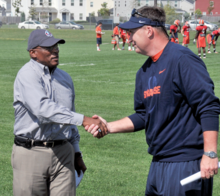
On December 12, 2008, Doug Marrone, a Bronx, New York native and former Orange player, was announced as the replacement for Robinson as head coach.[72][73][74] Marrone was the first Syracuse alumnus to serve as head football coach since Reaves H. Baysinger in 1948.[75] Reportedly, alumni such as Tim Green and Floyd Little wanted Marrone from the moment the previous coach Greg Robinson was fired, and when interviewed by Green, Marrone was found to have kept a folder of current high-school players in the Syracuse area to get a head start in recruiting.[76][77][78]
Improvement throughout the program was noticed immediately, as the Orange, despite only a marginal improvement in their win–loss record, going 4–8 under Marrone for his first year,[79] played many much more closely, including a 28–7 loss at number-seven Penn State.[80] In 2010, the Orange finished the regular season with a winning record for the first time since the 2001 season at 7–5, including road wins against number-19 West Virginia and two-time defending conference champion Cincinnati.[81] The team earned its first bowl bid since 2004 and along with second-ranked Oregon and 10th-ranked Boise State, the five road wins were the best in 2010 of all FBS teams.[82] December 30, 2010, Syracuse defeated Kansas State in the inaugural Pinstripe Bowl at Yankee Stadium. The game was televised live on ESPN.[83] Two years later, the Orange defeated West Virginia in the 2012 Pinstripe Bowl.[84] On January 7, 2013, Marrone left Syracuse, accepting the head-coaching position of the NFL's Buffalo Bills.[85]
Scott Shafer era (2013–2015)
[edit]The day after Marrone's departure, Syracuse promoted defensive coordinator Scott Shafer to head coach.[86] Coach Shafer's first season was marked by inconsistency from the team in spite of the bowl eligibility for the third time in four years. Syracuse capped off the season with a 21–17 victory over Minnesota in the 2013 Texas Bowl to finish the year 7–6.[87][88] The first season for the Orange in the ACC was 2013.[89] The 2014 season brought about a noticeable drop in quality. Syracuse finished the season a disappointing 3–9.[90] In 2015, after they started the season 3–0, the Orange collapsed, losing 8 of their final 9 games to finish the season 4–8,[91] and on November 23, 2015, it was announced that Shafer would be fired after the last game of the 2015 campaign.[92]
Dino Babers era (2016–2023)
[edit]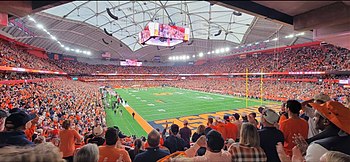
After an extensive coaching search, Syracuse announced the hiring of Bowling Green head coach Dino Babers as the new Orange head football coach.[93] Babers is the first African-American head coach in school history.[94] Babers brought with him an exciting, up-tempo offense he employed both as a head coach and as an assistant coach.[95]
In Babers' first season in charge, Syracuse started the year at 4–4, with the highlight of the first eight games being a 31–17 upset of number-17 Virginia Tech at home.[96] Syracuse kept the momentum from the upset going and beat rival Boston College on the road, 28–20.[97] However, they were blown out 54–0 in their next game by No. 3 Clemson.[98] In the final game of the season, Syracuse lost to ACC rival Pittsburgh by a score of 76–61.[99] The game was the highest scoring in FBS history with a combined score of 137.[100] Syracuse finished 4–8 for the second consecutive year.[101] In 2017, the Orange started 4–3, including a win over No. 2 Clemson,[102] but they lost their final five games to finish 4–8 for the third straight year.[103] In 2018, Syracuse earned its first bowl bid under Babers, going 10–3 with a bowl victory over West Virginia.[104]
In 2022, Syracuse started 6–0, earning a No. 14 ranking in the AP and Coaches' Polls. However, the team squandered a 21–10 halftime lead to Clemson, falling 27–21. The Orange lost their next four games before finishing the season with a win at Boston College to end the year 7–5.[105] Syracuse earned a trip to the Pinstripe Bowl where it lost to Minnesota, 28–20.[106] After a 4–0 start to the 2023 season, Syracuse lost 6 of the next 7 games, leading to Babers' firing with one game remaining in the 2023 season.[107]
Fran Brown era (2024–present)
[edit]On November 28, 2023, Brown was named the 31st head coach in program history.[108] His deep recruiting ties in South Jersey, one of Syracuse's primary recruiting grounds, were cited as a major reason for his hiring.[109] Less than a month later, Fran Brown signed Syracuse's best recruiting class in the "modern era" according to the Syracuse Post-Standard.[110] The class included several high-profile transfers, including five-star recruit Kyle McCord, the starting quarterback from the Ohio State Buckeyes.
Conference affiliations
[edit]Syracuse has been independent and affiliated with two conferences.[111]
- Independent (1889–1990)
- Big East Conference (1991–2012)
- Atlantic Coast Conference (2013–present)
Championships
[edit]National championships
[edit]Syracuse finished their undefeated 1959 season with a 23–14 victory over the No. 4 Texas Longhorns in the Cotton Bowl, and were named the national champions by all major selectors, including the major wire-service: AP and Coaches' Poll.[112]
| Year | Coach | Selectors | Record | Bowl | Opponent | Result | Final AP | Final Coaches |
|---|---|---|---|---|---|---|---|---|
| 1959 | Ben Schwartzwalder | AP, Billingsley, Boand, DeVold, Football News, Football Research, Football Writers, Helms, Litkenhous, NCF, NFF, Poling, Sagarin (ELO-Chess)*, UPI, Williamson | 11–0 | Cotton Bowl | Texas | W 23–14 | No. 1 | No. 1 |
Eastern and Conference championships
[edit]For much of its history, Syracuse played as an independent, as did the majority of what are now labeled as Division I FBS football-playing schools located in the Northeast and Mid-Atlantic regions. During this time, Eastern Championships were named by independent third-party selectors and awarded of various trophies. The process of picking an Eastern Champion eventually came to be symbolized by the Lambert-Meadowlands Trophy awarded by the New Jersey Sports and Exposition Authority beginning in 1936. As a result, the Lambert-Meadowlands Trophy, voted on by a panel of sports writers in New York, became the de facto conference championship for those schools.[113]
In 1991, the majority of football independents in the East (including Syracuse) aligned themselves together in the Big East Football Conference. The Big East first crowned an official champion in 1993. In 2013, Syracuse joined the Atlantic Coast Conference (ACC).
| Year | Coach | Conference | Overall record | Conference record |
|---|---|---|---|---|
| 1952 | Ben Schwartzwalder | ECAC (Lambert-Meadowlands Trophy) | 7–3 | – |
| 1956 | 7–2 | – | ||
| 1959 | 11–0 | – | ||
| 1966 | 8–3 | – | ||
| 1987 | Dick MacPherson | 11–0–1 | – | |
| 1992 | Paul Pasqualoni | 10–2 | – | |
| 1996† | Big East Conference | 9–3 | 6–1 | |
| 1997 | 9–4 | 6–1 | ||
| 1998 | 8–4 | 6–1 | ||
| 2004† | 6–6 | 4–2 | ||
| 2012† | Doug Marrone | 8–5 | 5–2 |
† Co-champions
Head coaches
[edit]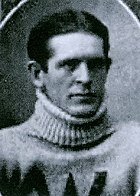
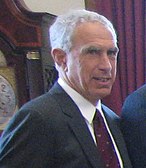
There have been 31 head coaches at Syracuse.[114] Fran Brown became the most recent head coach in 2024.
| College Football Hall of Fame inductee |
| Tenure | Coach | Years | Record | Pct. |
|---|---|---|---|---|
| 1890 | Robert Winston | 1 | 7–4 | .636 |
| 1891 | William Galbraith | 1 | 4–6 | .400 |
| 1892 | Jordan C. Wells | 1 | 0–8–1 | .056 |
| 1894 | George H. Bond | 1 | 6–5 | .545 |
| 1895–1896 | George O. Redington | 2 | 11–5–4 | .650 |
| 1897–1899 | Frank E. Wade | 3 | 17–9–2 | .643 |
| 1900–1902 | Edwin R. Sweetland | 3 | 20–5–2 | .778 |
| 1903 | Jason B. Parish & Ancil D. Brown | 1 | 5–4 | .556 |
| 1904–1905 | Charles P. Hutchins | 2 | 14–6 | .700 |
| 1906–1907
1913–1915 1917–1919 |
Frank "Buck" O'Neill | 8 | 52–19–6 | .714 |
| 1908 | Howard Jones | 1 | 6–3–1 | .650 |
| 1909–1910 | Tad Jones | 2 | 9–9–2 | .500 |
| 1911–1912 | C. DeForest Cummings | 2 | 9–8–2 | .526 |
| 1913 | Bill Hollenback | 1 | 5–4 | .556 |
| 1920–1924 | Chick Meehan | 5 | 35–8–4 | .787 |
| 1925–1926 | Pete Reynolds | 2 | 15–3–2 | .800 |
| 1927–1929 | Lew Andreas | 3 | 15–10–3 | .589 |
| 1930–1936 | Vic Hanson | 7 | 33–21–5 | .602 |
| 1937–1942
1944–1945 |
Ossie Solem | 8 | 30–27–6 | .524 |
| 1946 | Clarence Munn | 1 | 4–5 | .444 |
| 1947–1948 | Reaves Baysinger | 2 | 4–14 | .286 |
| 1949–1973 | Ben Schwartzwalder | 25 | 153–91–3 | .626 |
| 1974–1980 | Frank Maloney | 7 | 32–46 | .410 |
| 1981–1990 | Dick MacPherson | 10 | 66–46–4 | .586 |
| 1991–2004 | Paul Pasqualoni | 14 | 107–59–1 | .644 |
| 2005–2008 | Greg Robinson | 4 | 10–37 | .213 |
| 2009–2012 | Doug Marrone | 4 | 25–25 | .500 |
| 2013–2015 | Scott Shafer | 3 | 14–23 | .378 |
| 2016–2023 | Dino Babers | 8 | 41–55 | .427 |
| 2024–Present | Fran Brown | 1 | 5-1 | .833 |
Traditions and legacy
[edit]Legend of 44
[edit]The No. 44 at Syracuse is one of the most legendary numbers ever associated with a college football program. Like tailbacks at USC or quarterbacks at Purdue, the running back position at Syracuse has a rich tradition of greatness. Much of that greatness has revolved around one jersey number — 44.
Syracuse University officially retired #44 on Saturday, November 12, 2005. Since 1954, 11 players have worn the number and three of the most famous #44s — Jim Brown, Ernie Davis, and Floyd Little — are in the College Football Hall of Fame.
"The Greatest"
[edit]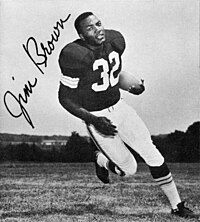
Jim Brown played at SU from 1954 to 1956. Brown earned numerous honors as Orange playing college football, basketball, track and field and lacrosse. In his senior year in 1956 Brown was a consensus first-team All-American and led the team to a Cotton Bowl. He finished fifth in the Heisman Trophy voting and set school records for highest season rush average (6.2), most rushing touchdowns in a single game (6), and an NCAA single-game record of 43 points.[115] After his successful college career, Brown went on to become one of the greatest football players of all time.[116]
Jim Brown was an All Pro and a Pro Bowl invitee every season he was in the league, was recognized as the AP NFL Most Valuable Player three times, and won an NFL championship with the Browns in 1964. He led the league in rushing yards in eight out of his nine seasons, and by the time he retired, he had shattered most major rushing records. Brown's memorable professional career led to his induction into the Pro Football Hall of Fame in 1971. His football accomplishments at Syracuse garnered him a berth in the College Football Hall of Fame. Jim Brown also earned a spot in the Lacrosse Hall of Fame, giving him a rare triple crown of sorts. Today, he is recognized as the greatest football player ever[117] by most professional football writers.[118]
But Brown's legacy goes beyond sports. Brown was one of the NFL's earliest social issues activists along with a group of top African American athletes from different sporting disciplines such as Bill Russell, Muhammad Ali and Kareem Abdul Jabbar. In the 1960s, Brown co-founded the Black Economic Union to support the growth of black-owned businesses. In the 1980s he also started the Amer-I-Can program which mentors youth in both inner cities and prisons.
"The Elmira Express"
[edit]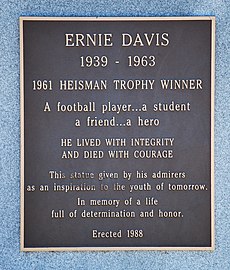
Ernie Davis, the only Orange player to win the Heisman Trophy, played at Syracuse from 1959 to 1961, and went on to national fame in each of those three seasons, winning first-team All-American honors twice. Davis led the 1959 Syracuse team to a national championship, capping an 11–0 season with a 23–14 win over the Texas Longhorns in the 1960 Cotton Bowl Classic, where Davis was named Most Valuable Player. That same season, Elmira Star-Gazette sports writer Al Mallette coined the nickname for Davis, the "Elmira Express".
During his Cotton Bowl visit to host city Dallas, Texas, Ernie and his black teammates found discrimination prevalent in the American South. Author Jocelyn Selim writes that at the banquet following the 1960 game, Davis was told he could only accept his award and then would be required to leave the segregated facility when the doors were opened to the public for a dance.
Despite the racial issues, Davis became the first black athlete to be awarded the Heisman Trophy (the highest individual honor in collegiate football) and he also won the Walter Camp Memorial Trophy following his 1961 season at Syracuse University. President John F. Kennedy had followed Davis' career and requested to meet him while he was in New York to receive the trophy. Later in 1963, when Elmira chose February 3 to celebrate Davis' achievements, Kennedy sent a telegram, reading:
Seldom has an athlete been more deserving of such a tribute. Your high standards of performance on the field and off the field, reflect the finest qualities of competition, sportsmanship and citizenship. The nation has bestowed upon you its highest awards for your athletic achievements. It's a privilege for me to address you tonight as an outstanding American, and as a worthy example of our youth. I salute you.[119]
Davis was the number-one pick in the 1962 NFL draft. He was bound to go to the Cleveland Browns where he would be teammates with Jim Brown. Davis signed a three-year contract with the Browns in late December 1961. It was the most lucrative contract for an NFL rookie up to that time.[120]
However, Davis' dream of pairing with Jim Brown took a tragic turn when Davis was diagnosed with leukemia. The disease was incurable and Davis died at age 23 at Cleveland Lakeside Hospital on May 18, 1963.[121] Following his death, the Browns retired his number 45 jersey.
A motion picture biography, The Express: The Ernie Davis Story, directed by Gary Fleder and based on the non-fiction book The Elmira Express: the Story of Ernie Davis by Robert C. Gallagher, began production in April 2007[122] and was released on October 10, 2008.
His commemorative statue now stands in front of the school named in his honor, Ernie Davis Academy. Another statue of Davis stands on the campus of Syracuse University, near the steps of Hendricks Chapel and the Shaw Quad where pre-game pep rallies are held. He was inducted to the College Football Hall of Fame in the fall of 1979.
"The Franchise"
[edit]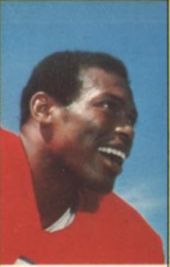
Floyd Little played for Syracuse from 1964 to 1966. He is the only three-time All-American running back to compete for the Syracuse University Orangemen. He finished 5th in Heisman Trophy voting in both 1965 and 1966. Floyd was the leading force behind teams that earned tickets to the Sugar Bowl in 1964 and the Gator Bowl in 1966 (teaming with another great tailback Larry Csonka in the latter). In addition to breaking the running records of Brown and Davis, Little became the greatest kick returner in Orange history. He led the country in all-purpose yardage, averaging 199 yards per game in 1965.[123]
Floyd Little was the first ever first-round draft pick to sign with the American Football League's Denver Broncos. During his rookie year, Little led the NFL in punt returns with a 16.9-yard average. He led the NFL in combined yards in 1967 and 1968 and was the first ever Bronco to win a rushing title, leading the AFC in rushing in 1970 and the following year he became the first Bronco to eclipse 1,000 yards, gaining 1,133 to lead the NFL.[124] Little was Denver Broncos team captain all 9 seasons, including his rookie season and he was known as "The Franchise". Floyd Little retired as the NFL's 7th all-time leading rusher with 6,323 yards. He later was inducted both in the College and Pro Football Hall of Fame. To honor his achievements Denver Broncos retired his #44 jersey.
Statues of Davis (second on campus), Brown and Little are at Syracuse University's Plaza 44, commemorating the number the running backs wore while playing football. No. 44 has become so associated with Syracuse that all university phone numbers begin with 44 and the university's ZIP code, 13244, was requested by university officials to remember those who wore 44 for the Orange. “Number 44 not only has come to represent greatness on the football field, it has become a part of the university's and the community's identity”.[123]
Pride of the Orange
[edit]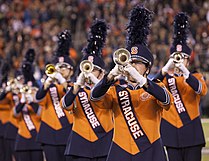
The Syracuse University Marching Band (SUMB), also known as the "Pride of the Orange", is the collegiate marching band of Syracuse University. The SUMB performs at all home football games throughout the season, and also makes several local parades and other performances throughout the year. It is one of the largest student organizations at Syracuse University, consisting of approximately 200 members. Founded in 1901, it is one of the oldest collegiate bands in the nation. Over the course of almost 120 years, the "Pride of the Orange" has played a huge role in university history and has been a constant source of pride for the university.[125]
- 'Cuse on the Quad and Quad Walk Starting three hours prior to Syracuse football home games, fans attend the social meeting, children's playground, food and beverages garden areas organized by the university located directly on the Quad, the center of the campus. Fans can watch College Game Day or the top college football games streaming live on ESPN under the tents. Fans can also take in the sights and sounds of local DJs, live music, and the Syracuse University Marching Band which performs on the steps of Hendrick's Chapel. 2 hours prior to every home game, the Orange players and coaching staff walk through the Quad, giving fans an opportunity to cheer on the team as they head into the Stadium.[126]
- Down the Field The band has first officially performed at a football game in 1925.[127] Over the decades, after every touchdown scored by the Orange, the SUMB plays the Syracuse University fight song, "Down the Field" (1914), written by Ralph Murphy, Class of 1916, and composed by C. Harold Lewis, Class of 1915. Win or lose, the Alma Mater is played by the band after every football game. The team will gather in the end zone with the cheerleaders and Otto and sing the song. Students and fans often wrap their arms around the shoulders of those standing next to them and sway side to side.
- Flip the Banner at Varsity Varsity, a pizza shop just outside the campus, has been passed down for three generations since 1926. The Varsity has been an integral part of SU sports culture for decades. The Orange schedule is displayed with banners hanging on the walls of the restaurant. After victories, the "Pride of the Orange" goes to Varsity and will play their sets inside the restaurant. After the band plays, the banner of the opposing team will be flipped upside down to symbolize the victory. For the entire season, the banners will tell the tale of Syracuse's season.
Rivalries
[edit]Pittsburgh
[edit]The rivalry with fellow ACC conference member Pittsburgh began in 1916, and has been played annually since 1955. The Panthers and Orange were both Eastern football independents for most of their history but have shared the same football conference since 1991 when the Big East Football Conference was formed from Eastern football independents. Pitt is tied as the most played opponent for Syracuse and Syracuse is the third most played opponent for Pitt. Sharing membership in the Atlantic Coast Conference (ACC) since 2013, the Panthers and Orange have played a total of 74 times. Pittsburgh leads the series 43–32–3 through the 2018 season.[128]
West Virginia
[edit]Syracuse and West Virginia have played 60 times. Often, these games have had a bearing on which collegiate program was the best in the East. In much of the '80s and '90s, Syracuse and West Virginia made for one of the Big East's best head-to-head match-ups on a yearly basis. West Virginia then left the Big East for the Big 12 Conference in 2012.[129]
The Ben Schwartzwalder Trophy goes to the winner of the West Virginia and Syracuse football game. The trophy was introduced in 1993 and is named after former WVU football player and Syracuse head coach Ben Schwartzwalder, who had died in March of that year.[130] The trophy weighs 55 pounds and was sculpted by Syracuse player Jimmy Ridlon.
West Virginia won the first trophy game at Syracuse and has gone on to win 11.[131] Syracuse has won the trophy eight times and currently holds it.[132] Syracuse leads the series 34–27 with the last two games played in 2012 Pinstripe Bowl and 2018 Camping World Bowl.[133] Syracuse is currently on the 4 game winning streak.
Penn State
[edit]The "heyday" of the Syracuse Penn State rivalry took place during the 1950s and 1960s when the teams battled back and forth in a competitive and often controversial string of contests. Syracuse football was led by legendary coach Ben Schwartzwalder, and Penn State by Rip Engle from 1950 to 1966 and Joe Paterno from 1967 to 2011. From 1950 to 1970, Syracuse won 11 to Penn State's 10 games. Unfortunately conference realignment and scheduling disagreements have dampened the intensity of the rivalry between the teams in recent years.
The teams first met on October 28, 1922, at the New York Polo Grounds battling to a scoreless[citation needed] tie kick-starting an East coast rivalry that has seen 71 total match-ups with the teams meeting almost every season from 1922 to 1990. The only exception was during the 1943 season, when Syracuse did not field team in light of World War II.[citation needed] From 1922 to 1940 Syracuse held a 10–4–4 advantage over the Nittany Lions, before Penn State would win 8 straight from 1941 to 1949. In the 1947 match-up, Penn State prevailed 40–0 in State College behind a staunch defense that held the Orange to (-47) total yards which is an NCAA record. (-107 rushing, 60 passing, in 49 plays)[134] From 1956 to 1966 the Orange regained command winning 8 out of 11. Since 1967, the Nittany Lions have dominated winning 24 of 27 match-ups including 16 straight from 1971 to 1986. In 1987, Dick MacPherson coached Syracuse to a 48–21 victory over the Nittany Lions in the JMA Wireless Dome. Syracuse won again the following year at Penn State, but lost the final two games before the suspension of the series in 1991.[135]
Penn State leads the all-time series 43–23–5, and have won 5 straight. The most recent match-up was played at Metlife Stadium in East Rutherford, NJ; a 23–17 win for Penn State.[136]
The teams do not have any future match-ups scheduled.
Colgate
[edit]For many years, Syracuse's main football rivals were the nearby Colgate Red Raiders. Colgate and Syracuse first played each other in football in 1891, with Colgate recording a 22–16 victory. The Red Raiders would go on the win 12 of the first 16 games in the series. Colgate's early dominance in the series quickly gave rise to the legend of the Hoodoo (a play on a corruption of the word Voodoo). The schools have played each other a total of 67 times, with the series tied at 31–31–5.
By the late 1950s, Syracuse had established itself as a major power in Eastern college football, and the games became increasingly one-sided. Following the 1961 contest, Colgate terminated the series, in order to focus on playing smaller, peer institutions.
Following the NCAA's I-A/I-AA split in 1978, the rivalry was intermittently renewed in the 1980s, with Syracuse comfortably winning all three games played in the decade. In 2010, the rivalry was renewed again after a 23-year absence, with Syracuse recording a 42–7 victory.[137][138] The series resumed again in 2016, when Syracuse hosted Colgate in a game played in the Carrier Dome,[139] which Syracuse won 33–7.
Uniforms
[edit]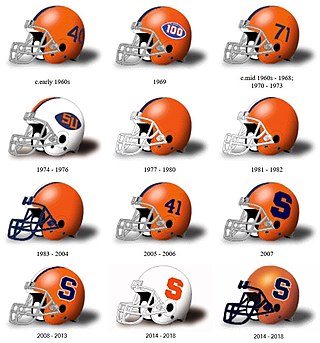

Syracuse University adopted orange color as its official color in 1890. The color was selected after a vote by students, alumni, faculty, and trustees, who noted it was a strong, bright color not claimed by any other school. Syracuse University was the first school to adopt only one primary color. It was chosen to "represent the golden apples of Hesperia, as well as the story of the sunrise and hope for a golden future."[140]
The first uniforms of the Orange were classic white sweaters and dark pants. Syracuse football wore these from 1889 to 1919. Orange color was first worn in the 1920s. A blue number was stitched on the back of orange jerseys, and the dark pants were replaced with Khaki moleskin. Blue began to be generally recognized as a secondary color of Syracuse.[141]
During its glory years beginning with the first bowl game appearance in 1952, Syracuse football used to wear white jerseys and orange pants at home at Archbold stadium. From 1952 to 1966, coach Ben Schwartzwalder, with his military background and always looking for an edge, thought white jerseys made his players look bigger, faster and stronger. During his first three seasons (1949–51) and in 1958, he also experimented with an all orange look to camouflage the football.[142] Blue jerseys were rarely seen during that era as Syracuse wore them only three times.
The switch to blue and orange combination at home came in 1967. Since then, it was blue jersey and orange pants at home until the first three Frank Maloney seasons (1974–76) when the newly assigned coach wanted to move away from the Schwartzwalder era with orange jerseys and unusually designed white helmets, before bringing blue jerseys and orange helmets back for essentially the next 28 seasons. Syracuse started wearing white jerseys and orange jerseys (and pants) at home again in the 2000s. Three colors (orange, white and blue) have been used in several combinations throughout the years.
Bowl games
[edit]Since the establishment of the team in 1890, Syracuse has appeared in 28 bowl games. Included in these games are 10 combined appearances in the "New Year's Six" bowl games (the Rose, Sugar, Cotton, Orange, Fiesta and Peach) and 1 Bowl Championship Series (BCS) game appearances. The New Year's Six represent six of the ten oldest bowl games played at the FBS level (missing the Sun, Gator, Citrus and Liberty bowls), continuing their original history of putting the very best teams in the country against each other.
Syracuse's all-time bowl record is 16 wins, 11 losses and 1 tie (16–11–1).
National polls
[edit]Syracuse has finished in the Final Top 25 rankings 21 times in the national polls, and finished in either the AP or Coaches Polls a combined 35 times since 1952. Syracuse has appeared in over 200 AP Polls including 7 weeks at AP No.1.[143]
| Syracuse Final Rankings | |||||||||||||||||||||||||||||||||||||||||||||||||||||||||||||||||||||||||||||||||||||||||||||
|---|---|---|---|---|---|---|---|---|---|---|---|---|---|---|---|---|---|---|---|---|---|---|---|---|---|---|---|---|---|---|---|---|---|---|---|---|---|---|---|---|---|---|---|---|---|---|---|---|---|---|---|---|---|---|---|---|---|---|---|---|---|---|---|---|---|---|---|---|---|---|---|---|---|---|---|---|---|---|---|---|---|---|---|---|---|---|---|---|---|---|---|---|---|
|
| ||||||||||||||||||||||||||||||||||||||||||||||||||||||||||||||||||||||||||||||||||||||||||||
† AP Poll began selecting the nation's Top 20 teams in 1936. Only the Top 10 teams were recognized from 1962 to 1967. The AP Poll expanded back to the Top 20 teams in 1968. In 1989, it began recognizing the Top 25 teams.
‡ UPI/Coaches Poll began selecting its Top 20 teams on a weekly basis in 1950 before expanding to the nations's Top 25 teams in 1990.
Individual award winners
[edit]Retired numbers
[edit]Syracuse University retired eight jersey numbers1 and hung them in the JMA Wireless Dome rafters.[144][145]
| Syracuse Orange football retired numbers | |||||||
|---|---|---|---|---|---|---|---|

|

|

|

|

|

|

|

|
| Donovan McNabb 1995–1998 |
Don McPherson 1984–1987 |
Larry Csonka 1965–1967 |
(25 players) 2 1921-1998 |
Joe Morris 1978–1981 |
Dwight Freeney 1998–2001 |
Tim Green 1982–1986 |
John Mackey 1960–1962 |
- Notes
1Syracuse doesn't retire numbers, instead retiring individual players' jerseys by hanging their number in the JMA Dome.[144]
2 The complete list of players who wore number 44 (by chronological order): Gifford Zimmerman, Charles Roberts, Clarence Taylor, Don Baldwin, Richard Fishel, Henry Merz, Hamilton Watt, Francis Mullins, Stanley Stanislay, Benjamin DeYoung, Francis Mazejko, Richard Ransom, J. O'Brien, Robert Eberling, Jim Brown, Thomas Stephens, Ernie Davis, William Schoonover, Floyd Little, Richard Panczyszyn, Mandel Robinson, Glenn Moore, Michael Owens, Terry Richardson, and Rob Konrad.
The 150 greatest players in college football's 150-year history
[edit]Jim Brown is named as the greatest player in college football history. ESPN unveiled college football's 150 greatest players of the first 150 years of history of college football. ESPN's top 150 players were determined by a blue-ribbon panel of current and former writers, broadcasters, administrators, sports information directors and ESPN personalities.[146][147]
| Rank | Name | Pos. | Years |
|---|---|---|---|
| 1 | Jim Brown | RB | 1954-56 |
| 15 | Ernie Davis | RB | 1959-61 |
| 52 | Floyd Little | RB | 1964–66 |
Heisman Trophy voting
[edit]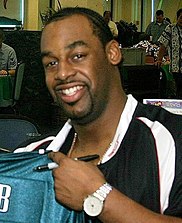
| Name | Pos. | Year | Place |
|---|---|---|---|
| Dwight Freeney | DE | 2001 | 9th |
| Donovan McNabb | QB | 1998 | 5th |
| Don McPherson | QB | 1987 | 2nd |
| Larry Csonka | FB | 1967 | 4th |
| Floyd Little | RB | 1966 | 5th |
| Floyd Little | RB | 1965 | 5th |
| Ernie Davis | RB | 1961 | 1st |
| Jim Brown | HB | 1956 | 5th |
National award winners
[edit]
|
|
|
| ||||||||||||||||||||||||||||||||||||||||||||||||||||||||||||||||||||||||||||||||||||||||||||||||||||||||||||||
† Finalist
National coaching awards
[edit]
|
|
|
| ||||||||||||||||||||||||||||||||||||||||||||
Consensus All-Americans
[edit]Syracuse football players have earned All-America honors over 130 times since 1908. Among those selections, 20 have achieved Consensus All-American status. Of those consensus All-Americans, 9 are unanimous selections. Below is the list of first team All Americans named by major selectors.
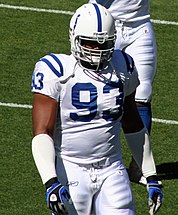
| All-America team selections | ||||||||||||||||||||||||||||||||||||||||||||||||||||||||||||||||||||||||||||||||||||||||||||||||||||||||||||||||||||||||||||||||||||||||||||||||||||||||||||||||||||||||||||||||||||||||||||||||||||||||||||||||||||||||||||||||||||||||||||
|---|---|---|---|---|---|---|---|---|---|---|---|---|---|---|---|---|---|---|---|---|---|---|---|---|---|---|---|---|---|---|---|---|---|---|---|---|---|---|---|---|---|---|---|---|---|---|---|---|---|---|---|---|---|---|---|---|---|---|---|---|---|---|---|---|---|---|---|---|---|---|---|---|---|---|---|---|---|---|---|---|---|---|---|---|---|---|---|---|---|---|---|---|---|---|---|---|---|---|---|---|---|---|---|---|---|---|---|---|---|---|---|---|---|---|---|---|---|---|---|---|---|---|---|---|---|---|---|---|---|---|---|---|---|---|---|---|---|---|---|---|---|---|---|---|---|---|---|---|---|---|---|---|---|---|---|---|---|---|---|---|---|---|---|---|---|---|---|---|---|---|---|---|---|---|---|---|---|---|---|---|---|---|---|---|---|---|---|---|---|---|---|---|---|---|---|---|---|---|---|---|---|---|---|---|---|---|---|---|---|---|---|---|---|---|---|---|---|---|---|---|---|---|---|---|---|---|---|---|---|---|---|---|---|---|---|---|
|
|
| ||||||||||||||||||||||||||||||||||||||||||||||||||||||||||||||||||||||||||||||||||||||||||||||||||||||||||||||||||||||||||||||||||||||||||||||||||||||||||||||||||||||||||||||||||||||||||||||||||||||||||||||||||||||||||||||||||||||||||
| * – Consensus All-Americans | ||||||||||||||||||||||||||||||||||||||||||||||||||||||||||||||||||||||||||||||||||||||||||||||||||||||||||||||||||||||||||||||||||||||||||||||||||||||||||||||||||||||||||||||||||||||||||||||||||||||||||||||||||||||||||||||||||||||||||||
| # – Unanimous All-Americans | ||||||||||||||||||||||||||||||||||||||||||||||||||||||||||||||||||||||||||||||||||||||||||||||||||||||||||||||||||||||||||||||||||||||||||||||||||||||||||||||||||||||||||||||||||||||||||||||||||||||||||||||||||||||||||||||||||||||||||||
Eastern College Athletic Conference (ECAC) awards
[edit]
|
|
| ||||||||||||||||||||||
Big East Conference awards
[edit]
|
|
|
| ||||||||||||||||||||||||||||||||||||||||||||||||||||||||||
Big East Football 10th Anniversary honors
[edit]The best players of the decade and the team, which includes 29 players, was selected by Big East media members to celebrate the 10th year of Big East football.[148]
|
| ||||||||||||||||||||
Atlantic Coast Conference awards
[edit]
|
|
| ||||||||||||||||||||||||||||||||
† co-winner
ACC All-Conference selections
[edit]Syracuse football players in All-ACC teams since 2013.
| All-ACC team selections | |||||||||||||||||||||||||||||||||||||||||||||||||||||||||||||||||||||||||||||||||||||||||||||||||||||||||||||||||||||||||||||||||||||||||||||||||||
|---|---|---|---|---|---|---|---|---|---|---|---|---|---|---|---|---|---|---|---|---|---|---|---|---|---|---|---|---|---|---|---|---|---|---|---|---|---|---|---|---|---|---|---|---|---|---|---|---|---|---|---|---|---|---|---|---|---|---|---|---|---|---|---|---|---|---|---|---|---|---|---|---|---|---|---|---|---|---|---|---|---|---|---|---|---|---|---|---|---|---|---|---|---|---|---|---|---|---|---|---|---|---|---|---|---|---|---|---|---|---|---|---|---|---|---|---|---|---|---|---|---|---|---|---|---|---|---|---|---|---|---|---|---|---|---|---|---|---|---|---|---|---|---|---|---|---|---|
|
|
|
| ||||||||||||||||||||||||||||||||||||||||||||||||||||||||||||||||||||||||||||||||||||||||||||||||||||||||||||||||||||||||||||||||||||||||||||||||
| * – 1st All-ACC | |||||||||||||||||||||||||||||||||||||||||||||||||||||||||||||||||||||||||||||||||||||||||||||||||||||||||||||||||||||||||||||||||||||||||||||||||||
Hall of Fame
[edit]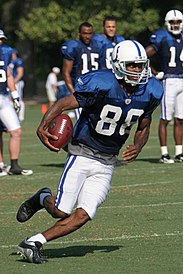
College Football Hall of Fame
[edit]Syracuse is one of the most represented schools in the National Football Foundation's College Hall of Fame. The Orange have 18 enshrinees, second-most among ACC programs behind Pittsburgh (25). Syracuse has had 11 players and 7 former coaches inducted into the Hall of Fame.[149]
| Name | Pos. | Years | Inducted |
|---|---|---|---|
| Frank "Buck" O'Neill | HC | 1906-07; 1913–15; 1917–19; 1936 | 1951 |
| Howard Jones | HC | 1908 | 1951 |
| Joe Alexander | G | 1917–1920 | 1954 |
| Tad Jones | HC | 1909–1910 | 1958 |
| Biggie Munn | HC | 1946 | 1959 |
| Lynn 'Pappy' Waldorf | T | 1922-1924 | 1966 |
| Bud Wilkinson | HC | 1938-41 | 1969 |
| Jim Brown | HB | 1954–1956 | 1971 |
| Vic Hanson | E/HC | 1924-26; 1928–36 | 1973 |
| Ernie Davis | HB | 1959–1961 | 1979 |
| Ben Schwartzwalder | HC | 1949–1973 | 1982 |
| Floyd Little | RB | 1964–1966 | 1983 |
| Hugh "Duffy" Daugherty | G/HC | 1937-39; 1940, 1946 | 1984 |
| Larry Csonka | FB | 1965–1967 | 1989 |
| Tim Green | DT | 1982–1985 | 2002 |
| Don McPherson | QB | 1984–1987 | 2008 |
| Dick MacPherson | HC | 1980–1990 | 2009 |
| Art Monk | WR | 1976–1979 | 2012 |
| Dwight Freeney | DE | 1998–2001 | 2023 |
Pro Football Hall of Fame
[edit]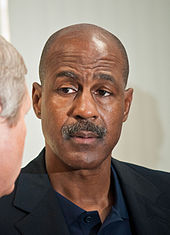
Syracuse's legacy in the Pro Football Hall of Fame ranks among the finest of any college football program. The Orange boast eight inductees, tied for the eight-most of any school. Only Notre Dame (13), USC (13), Michigan (11), Ohio State (10), Miami (9), and Pittsburgh (9) have more representatives in the Pro Football Hall of Fame than Syracuse.[150]
| Name | Team (Years) | Position | Inducted |
|---|---|---|---|
| Jim Brown | Cleveland Browns (1957–65) | FB | 1971 |
| Jim Ringo | Green Bay Packers (1953–63) | C | 1981 |
| Larry Csonka | Miami Dolphins (1968–74, 1979) | FB | 1987 |
| John Mackey | Baltimore Colts (1963–71) | TE | 1992 |
| Al Davis | Oakland Raiders (1963–2011) | Owner/GM/Commissioner | 1992 |
| Art Monk | Washington Redskins (1980–93) | WR | 2008 |
| Floyd Little | Denver Broncos (1967–75) | RB | 2010 |
| Marvin Harrison | Indianapolis Colts (1996–2008) | WR | 2016 |
| Dwight Freeney | Indianapolis Colts (2002–2012) | EDGE | 2024 |
Orange in the National Football League
[edit]NFL All-Time Team
[edit]The National Football League 100th Anniversary All-Time Team was revealed in 2019 after being voted on by a panel consisting of media members, former players and league personnel. It honored the best players of the first 100 years of the National Football League (NFL). The team was chosen by a panel of 26 voters made up of coaches, team and front office executives, former players and members of the media between April and June 2018. Players were selected at each position group, and were voted in no order. There will be 10 quarterbacks, 12 running backs, 10 wide receivers, 5 tight ends, 7 tackles, 7 guards, 4 centers, 7 defensive ends, 7 defensive tackles, 6 outside linebackers, 6 middle/inside linebackers, 7 cornerbacks, 6 safeties, 2 kickers, 2 punters, 2 kick/punt returners, and 10 coaches. Sources:[151][152][153][154][155][156][157][158][159]
| Position | Player | Team(s) played for | Accolades |
|---|---|---|---|
| RB | Jim Brown | Cleveland Browns (1957–1965) | Hall of Fame (1971), NFL 75th Anniversary All-Time Team, NFL 1960s All-Decade Team, NFL Rookie of the Year (1957), 3× AP NFL Most Valuable Player (1957, 1958, 1965), 8× First-team All-Pro (1957–1961, 1963–1965), 9× Pro Bowler (1957–1965), NFL champion (1964) |
| WR | Marvin Harrison | Indianapolis Colts (1996–2008) | Hall of Fame (2016), NFL 2000s All-Decade Team, 3× First-team All-Pro (1999, 2002, 2006), 8× Pro Bowler (1999–2006), Super Bowl champion (XLI) |
| TE | John Mackey | Baltimore Colts (1963–1971) San Diego Chargers (1972) |
Hall of Fame (1992), NFL 1960s All-Decade Team, 3× First-team All-Pro (1966–1968), 4× Pro Bowler (1963, 1966–1968), NFL champion (1968), Super Bowl champion (V) |
Bold Unanimous selection.[151][154][157][159]
NFL All-Decade Teams
[edit]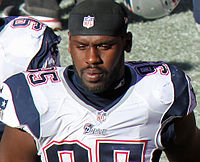
NFL Individual Awards
[edit]| Name | Team | Pos. | Year |
|---|---|---|---|
| Jim Brown | Cleveland Browns | RB | 1957, 1958, 1963, 1965 |
| Name | Team | Pos. | Year |
|---|---|---|---|
| Larry Csonka | Miami Dolphins | HB | 1974 |
| Name | Team | Pos. | Year |
|---|---|---|---|
| Jim Nance | New England Patriots | RB | 1966 |
| Name | Team | Pos. | Year |
|---|---|---|---|
| Donovan McNabb | Philadelphia Eagles | QB | 2000 |
| Name | Team | Pos. | Year |
|---|---|---|---|
| Jim Brown | Cleveland Browns | RB | 1957-61, 1963-65 |
| Floyd Little | Denver Broncos | RB | 1971 |
| Name | Team | Pos. | Year |
|---|---|---|---|
| Dwight Freeney | Indianapolis Colts | DE | 2004 |
| Chandler Jones | Arizona Cardinals | EDGE | 2017 |
| Name | Team | Pos. | Year |
|---|---|---|---|
| Larry Csonka | Miami Dolphins | HB | 1979 |
| Name | Team | Pos. | Year |
|---|---|---|---|
| Jim Brown | Cleveland Browns | RB | 1957 |
| Name | Team | Pos. | Year |
|---|---|---|---|
| Gary Anderson | Minnesota Vikings | K | 1998 |
| Name | Team | Pos. | Year |
|---|---|---|---|
| Al Davis | Las Vegas Raiders | GM/Owner | 1976, 2002[160] |
| Scott Pioli | New England Patriots | GM | 2003, 2004, 2007 |
| Scott Pioli | Kansas City Chiefs | GM | 2010 |
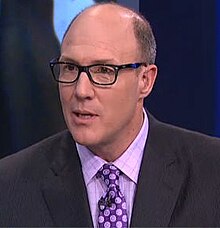
| Name | Team | Pos. | Year |
|---|---|---|---|
| Scott Pioli | Patriots, Chiefs | GM | 2000s |
| Name | Team | Pos. | Year |
|---|---|---|---|
| Al Davis | Las Vegas Raiders | HC | 1963 |
| Tom Coughlin | Jacksonville Jaguars | HC | 1996 |
All-Pro and Pro Bowls
[edit]| Name | Team | Pos. | Pro-Bowl | All-Pro |
|---|---|---|---|---|
| Jim Ringo | Green Bay Packers Philadelphia Eagles |
C | 1957, 1958, 1959, 1960, 1961, 1962, 1963, 1964, 1965, 1967 | 1957, 1958, 1959, 1960, 1961, 1962, 1963, 1964, 1966 |
| Jim Brown | Cleveland Browns | RB | 1957, 1958, 1959, 1960, 1961, 1962, 1963, 1964, 1965 | 1957, 1958, 1959, 1960, 1961, 1962, 1963, 1964, 1965 |
| Walt Sweeney | San Diego Chargers | G | 1964, 1965, 1966, 1967, 1968, 1969, 1970, 1970, 1971, 1972 | 1967, 1968, 1969, 1970, 1971 |
| Marvin Harrison | Indianapolis Colts | WR | 1999, 2000, 2001, 2002, 2003 2004, 2005, 2006 | 1999, 2000, 2001, 2002, 2003 2004, 2005, 2006 |
| Dwight Freeney | Indianapolis Colts | DE | 2003, 2004, 2005, 2008, 2009, 2010, 2011 | 2003, 2004, 2005, 2009 |
| Larry Csonka | Miami Dolphins | FB | 1970, 1971, 1972, 1973, 1974 | 1971, 1972, 1973 |
| Floyd Little | Denver Broncos | RB | 1968, 1969, 1970, 1971, 1973 | 1969, 1970, 1971 |
| John Mackey | Baltimore Colts | TE | 1963, 1965, 1966, 1967, 1968 | 1966, 1967, 1968 |
| Donovan McNabb | Philadelphia Eagles | QB | 2000, 2001, 2002, 2003, 2004, 2009 | |
| Gary Anderson | Pittsburgh Steelers Minnesota Vikings |
K | 1983, 1985, 1993, 1998 | 1983, 1985, 1998 |
| Chandler Jones | New England Patriots Arizona Cardinals |
DE | 2015, 2017, 2019, 2021 | 2017, 2019 |
| Art Monk | Washington Redskins | WR | 1984, 1985, 1986 | 1984, 1985 |
| Keith Bulluck | Tennessee Titans | LB | 2003, 2004 | 2002, 2003, 2004 |
| Jim Nance | New England Patriots | FB | 1966, 1967 | 1966, 1967, 1969 |
| Daryl Johnston | Dallas Cowboys | FB | 1993, 1994 | 1993, 1994 |
| Rob Moore | New York Jets Arizona Cardinals |
WR | 1994, 1997 | 1997 |
| Joe Morris | New York Giants | RB | 1985, 1986 | 1986 |
| Stan Walters | Philadelphia Eagles | T | 1978, 1979 | 1979 |
| Jim Collins | Los Angeles Rams | LB | 1984, 1985 | 1984, 1985 |
| Al Bemiller | Buffalo Bills | C | 1965 | |
| Rob Burnett | Cleveland Browns | DE | 1994 | 2000 |
| Olindo Mare | Miami Dolphins | K | 1999 | 1999 |
| Tom Myers | New Orleans Saints | DB | 1979 | 1979 |
| David Tyree | New York Giants | WR | 2005 | 2005 |
| Otis Wilson | Chicago Bears | LB | 1985 | 1984, 1985 |
| Joe Ehrmann | Baltimore Colts | DT | 1975 | 1976 |
| Doc Alexander | Rochester Jeffersons | C | 1921, 1922 | |
| Jack McBride | New York Giants | FB | 1925 | |
| Jim Ridlon | Dallas Cowboys | DB | 1964 |
Facilities
[edit]Archbold Stadium
[edit]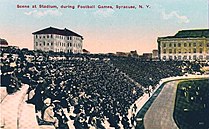
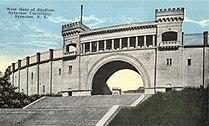
Upon its completion in 1907, Archbold Stadium was touted as the "Greatest Athletic Arena in America." Designed to resemble the Roman Coliseum and to never become outdated, Archbold Stadium was a trademark of Syracuse Orange football.[161] The stadium was named for John D. Archbold, who donated $600,000 for the project. The Orange battled for victory inside the walls of Archbold Stadium from 1907 until 1978. Orange fans of the early 1900s were astonished by Archbold's unique design. The stadium's front entrance defined the character of Archbold, which consisted of an impressive cement arch and two epic towers, which extended high above the archway.
In addition to providing the university and the fans with an aesthetically beautiful stadium, Archbold gave the Orange football team a distinct home field advantage for all 71 years of its existence. The Orange went 265–112–20 all-time at Archbold, and at times were nearly unbeatable. From 1915 to 1927, Syracuse achieved a remarkable home record of 61–10–6. Then, during the 11-year stretch from 1958 to 1968, the team in Orange won 47 and lost only 6 games played at Archbold Stadium.[161]
Toward the end of the 1970s, Syracuse University was under pressure to improve its football facilities in order to remain a Division I-A football school. Archbold Stadium could not be expanded; earlier in the decade it had been reduced from 40,000 seats to 26,000 due to fire codes. Therefore, Syracuse University decided to build a new stadium on the site of Archbold, which, appropriately for Syracuse's often cold weather, was to have a domed Teflon-coated, fiberglass inflatable roof. While the JMA Wireless Dome was being built during the 1979 season, Syracuse played "home" games at three different locations—Giants Stadium, home of the NFL's New York Giants; Rich Stadium (now known as New Era Field), home of the NFL's Buffalo Bills; and Schoellkopf Field, home of the Cornell Big Red.
The JMA Wireless Dome
[edit]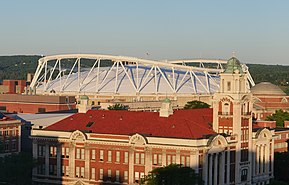
The Syracuse Orange football team plays their games at the JMA Wireless Dome, referred to as the JMA Dome. The stadium is also known as "The Loud House", when it opened in September 1980, it was made clear just how loud it was inside; soon famous nickname was coined. It is the largest domed stadium of any college campus and the largest domed stadium in the Northeastern United States. The JMA Wireless Dome is used for several sports at the university and seats 49,250 for football.[1] The field was dedicated in 2009 to Ernie Davis, the first African American Heisman Trophy winner. The field now reads "Ernie Davis Legends Field" between the 45 yard lines on the home side. Davis's number forty-four was also placed along that yard line. The dedication took place at the Syracuse vs. West Virginia game October 10, 2009.[162]
In May 2018, the university announced the first phase of a major renovation to the JMA Wireless Dome as the central portion of a larger campus update. The most significant changes were the replacement of the current air-supported roof with a fixed roof, two-thirds of which will be translucent, the installation of air conditioning and the largest centerhung videoboard in college sports.[163] The upgrade also included a new lighting and sound systems, Wi-Fi improvements, accessibility upgrades, improved restrooms, and new concession spaces.[164] The high-profile renovation project by Geiger Engineers - the same firm that was the structural engineer for the original stadium, was named a winner of NCSEA's 2021 Excellence in Structural Engineering Award for Forensic/Renovation/Retrofit/Rehabilitation Structures.[165]
The school announced the next phase of its work to enhance, elevate and expand the stadium experience in April, 2022. This includes a complete replacement of benches with individual seats; a construction of a new publicly accessible event facility adjacent to the Dome; and an upgrade of the entire digital infrastructure, including latest 5G technology and wireless connectivity.[166] The renovation of both phases, estimated to cost $165 million, is expected to be completed in 2024.
Future scheduled opponents
[edit]Announced schedules as of November 14, 2024.[167]
| 2025 | 2026 | 2027 | 2028 | 2029 | 2030 | 2031 | 2032 | 2033 | 2034 | 2035 | 2036 | 2037 |
|---|---|---|---|---|---|---|---|---|---|---|---|---|
| vs Tennessee (in Atlanta, GA) | New Hampshire | at Penn State | Penn State | Morgan State | at Notre Dame | Notre Dame | ||||||
| UConn | at Army | at UConn | UConn | Notre Dame | ||||||||
| Army | UConn | |||||||||||
| at Notre Dame | Notre Dame |
References
[edit]- ^ a b "History of the Carrier Dome". Cuse.com. September 29, 2008. Retrieved April 28, 2020.
- ^ NCAA Statistics https://stats.ncaa.org/teams/history?utf8=✓&org_id=688&sport_code=MFB&commit=Search
- ^ "SYRACUSE ALL-AMERICA SELECTIONS". cuse.com. September 20, 2018. Retrieved November 24, 2018.
- ^ "Color Palette". Syracuse University Brand Guidelines (PDF). Retrieved December 19, 2022.
- ^ "Syracuse University, JMA Wireless Announce Naming Rights Partnership, Usher in the JMA Wireless Dome Era | Syracuse University News". May 19, 2022. Retrieved May 19, 2022.
- ^ "Syracuse Football History". Syracuse University Athletics. Retrieved November 29, 2018.
- ^ "Inductees - Football Players & Coaches - College Football Hall of Fame". www.cfbhall.com. Retrieved November 29, 2018.
- ^ "Hall of Famers by College - Hall of Famers | Pro Football Hall of Fame Official Site". www.profootballhof.com. Retrieved November 29, 2018.
- ^ Alandt, Anthony (November 2, 2022). "The storied history of Syracuse football began well before its 1889 loss to Rochester". The Daily Orange. Retrieved December 18, 2022.
- ^ Robert J. Reid (October 3, 2005). A Memorable Season in College Football: A Look Back at 1959. Author House. p. 95. ISBN 9781452040332. Retrieved March 24, 2017.
- ^ "John Barsha, 78, Lawyer, Football All-America in 1918". The New York Times. February 21, 1976 – via NYTimes.com.
- ^ Glickman, Marty. (1996). The Fastest Kid on the Block: The Marty Glickman Story. Syracuse: University of Syracuse Press.
- ^ "Wilmeth Sidat-Singh". www.orangehoops.org. Retrieved November 29, 2018.
- ^ Walker, Rhiannon (December 14, 2013). ""Amending a Wrong"". Stories Beneath the Shell.
- ^ "Syracuse University Athletics – The History of Syracuse Football". Suathletics.com. November 12, 2005. Retrieved March 24, 2017.
- ^ "1953 Orange Bowl Alabama vs Syracuse". Saturdaydownsouth.com. January 1, 1953. Retrieved March 24, 2017.
- ^ "Syracuse University Athletics – 1957 Cotton Bowl". Cuse.com. Retrieved March 24, 2017.
- ^ "1959 Orange Bowl: Oklahoma v. Syracuse – OUDaily.com: Home". OUDaily.com. December 23, 2014. Retrieved March 24, 2017.
- ^ Vecsey, George (April 30, 2013). "Jim Brown, Still a Hometown Hero". The New York Times.
- ^ ""Hometown Hall of Famers™" Plaque Honors Jim Brown in Manhasset, N.Y. | Pro Football Hall of Fame Official Site".
- ^ "Joe Montana, Jim Brown on Hall of Fame 50th Anniversary Team". NFL.com. July 29, 2013. Archived from the original on December 1, 2017. Retrieved February 21, 2017.
- ^ "The Cotton Bowl 1957". Mmbolding.com. Archived from the original on June 8, 2011. Retrieved December 18, 2010.
- ^ "ESPN Classic – Davis won Heisman, respect". Espn.com. Retrieved March 24, 2017.
- ^ "Syracuse football legend Floyd Little will leave in June". Syracuse.com. May 12, 2016. Retrieved March 24, 2017.
- ^ "The Official Website of Larry Csonka – Football Years". Larrycsonka.com. Retrieved March 24, 2017.
- ^ Mcg, Robert (April 29, 1993). "Ben Schwartzwalder Dies at 83 – Revitalized Football at Syracuse". The New York Times. Retrieved March 24, 2017.
- ^ "Ben Schwartzwalder Coaching Record | College Football at". Sports-reference.com. January 1, 1970. Retrieved March 24, 2017.
- ^ Eagan, Matt (October 22, 2006). "Syracuse Lauds Athletes Who Boycotted In 1970". Hartford Courant. pp. A1, A6. Retrieved January 19, 2021 – via Newspapers.com
 .
.
- ^ Nelson Manfred Blake (October 1969). "Novelists' America: Fiction as History, 1910–1940". The American Historical Review. Syracuse, N. Y.: Syracuse University Press: xiii, 279. $6.95.). doi:10.1086/ahr/75.1.228. ISSN 1937-5239.
- ^ "Maloney, Michigan Aide, Syracuse Football Coach - The New York Times". The New York Times. August 9, 2018. Archived from the original on August 9, 2018.
- ^ "Former Syracuse football coaches had their own memorable speeches". Syracuse.com. October 20, 2016. Retrieved March 24, 2017.
- ^ a b Stefan, Robert (March 27, 2013). "A History of Archbold Stadium |". Syrguide.com. Retrieved March 24, 2017.
- ^ "Art Monk | Pro Football Hall of Fame Official Site". Profootballhof.com. December 5, 1957. Retrieved March 24, 2017.
- ^ Alfano, Peter (October 12, 1987). "At 5–0, Syracuse Football Is Back in the Game". The New York Times. Retrieved March 24, 2017.
- ^ "The Cornell Daily Sun 25 November 1980 — The Cornell Daily Sun". Cdsun.library.cornell.edu. November 25, 1980. Retrieved March 24, 2017.
- ^ "MacPherson Is Hired By the Patriots". The New York Times. January 8, 1991. Retrieved March 24, 2017.
- ^ "Sports Report, Syracuse University Magazine". Sumagazine.syr.edu. Retrieved March 24, 2017.
- ^ "1987 Syracuse Orange Schedule and Results | College Football at". Sports-reference.com. January 1, 1970. Retrieved March 24, 2017.
- ^ "Syracuse football needs 'Northeast guy' (ex-players speak after Scott Shafer's firing)". Syracuse.com. November 24, 2015. Retrieved March 24, 2017.
- ^ Robert Markus (January 1, 1988). "Switzer Trashes Miami's Hopes Against Oklahoma". Articles.chicagotribune.com. Retrieved March 24, 2017.
- ^ "How Auburn's Pat Dye 'pissed off' Syracuse in the Sugar Bowl". AL.com. January 2, 2017. Retrieved March 24, 2017.
- ^ Peter Alfano (January 2, 1988). "SUGAR BOWL – Syracuse Deprived Of Perfect Ending". The New York Times. Retrieved March 24, 2017.
- ^ "MacPherson as excited as kid to bring old-time values to Pats". Articles.baltimoresun.com. January 8, 1991. Retrieved March 24, 2017.
- ^ a b Smith, Connor (September 2, 2021). "The rise and fall of Syracuse's northeast recruiting base". The Daily Orange. Retrieved September 5, 2021.
- ^ "Pasqualoni named Syracuse football coach". Upi.com. January 9, 1991. Retrieved March 24, 2017.
- ^ "Paul Pasqualoni Coaching Record | College Football at". Sports-reference.com. January 1, 1970. Retrieved March 24, 2017.
- ^ "Complete list of Syracuse football players selected in NFL Draft history (photo gallery)". Syracuse.com. May 8, 2014. Retrieved March 24, 2017.
- ^ "Syracuse University Athletics – Syracuse Football History". Cuse.com. Retrieved March 24, 2017.
- ^ "Big Ten Conference Official Site". Bigten.org. Archived from the original on November 14, 2013. Retrieved March 24, 2017.
- ^ Gall, Braden (July 3, 2013). "History of Big East Realignment; Birth of the American Athletic Conference". Athlonsports.com. Retrieved March 24, 2017.
- ^ "A.C.C. Invites Miami and Virginia Tech to Join". The New York Times. June 25, 2003. Retrieved March 24, 2017.
- ^ "Then There Were 12: Boston College Joins ACC". WRAL.com. October 13, 2003. Retrieved March 24, 2017.
- ^ Wieberg, Steve (June 25, 2003). "USATODAY.com – Virginia governor's push to include Va. Tech pays off". Usatoday30.usatoday.com. Retrieved March 24, 2017.
- ^ "2002 Syracuse Orange Schedule and Results | College Football at". Sports-reference.com. January 1, 1970. Retrieved March 24, 2017.
- ^ "2003 Syracuse Orange Schedule and Results | College Football at". Sports-reference.com. January 1, 1970. Retrieved March 24, 2017.
- ^ "2004 Syracuse Orange Schedule and Results | College Football at". Sports-reference.com. January 1, 1970. Retrieved March 24, 2017.
- ^ Long, Mark (December 22, 2004). "USATODAY.com – It's all Georgia Tech in Champs Sports Bowl". Usatoday30.usatoday.com. Retrieved March 24, 2017.
- ^ "Syracuse fires football coach Paul Pasqualoni – College Football". ESPN. December 29, 2004. Retrieved March 24, 2017.
- ^ "Syracuse hires Greg Robinson as coach | Kane County Chronicle". Kcchronicle.com. March 20, 2017. Archived from the original on February 27, 2017. Retrieved March 24, 2017.
- ^ "Robinson, Syracuse put faith in new QB". Espn.com. April 3, 2007. Retrieved March 24, 2017.
- ^ "Syracuse vs. West Virginia – Game Recap – October 11, 2008". ESPN. October 11, 2008. Archived from the original on February 27, 2017. Retrieved March 24, 2017.
- ^ "Buffalo vs. Syracuse – Game Recap – September 10, 2005". ESPN. September 10, 2005. Archived from the original on February 27, 2017. Retrieved March 24, 2017.
- ^ "Virginia vs. Syracuse – Game Recap – September 17, 2005". ESPN. September 17, 2005. Retrieved March 24, 2017.
- ^ "2005 Syracuse Orange Schedule and Results | College Football at". Sports-reference.com. January 1, 1970. Retrieved March 24, 2017.
- ^ "2006 Syracuse Orange Schedule and Results | College Football at". Sports-reference.com. January 1, 1970. Retrieved March 24, 2017.
- ^ "2007 Syracuse Orange Schedule and Results | College Football at". Sports-reference.com. January 1, 1970. Retrieved March 24, 2017.
- ^ "Syracuse vs. Louisville – Game Recap – September 22, 2007". ESPN. September 23, 2007. Archived from the original on February 27, 2017. Retrieved March 24, 2017.
- ^ "Syracuse Fires Football Coach Greg Robinson". The New York Times. November 17, 2008. Retrieved March 24, 2017.
- ^ "2008 Syracuse Orange Schedule and Results | College Football at". Sports-reference.com. January 1, 1970. Retrieved March 24, 2017.
- ^ "Syracuse Stuns Notre Dame, Ending Ugly Day for the Irish". The New York Times. November 22, 2008. Retrieved March 24, 2017.
- ^ "Penn State vs. Syracuse – Game Recap – September 13, 2008". ESPN. September 14, 2008. Archived from the original on February 27, 2017. Retrieved March 24, 2017.
- ^ "Syracuse hires Doug Marrone as football coach". ESPN.com.
- ^ "Syracuse hires Doug Marrone as football coach". Associated Press. December 12, 2008.
- ^ Webb, Donnie (December 12, 2008). "Marrone Hired As Syracuse's Head Football Coach". The Post-Standard. Syracuse. Retrieved December 12, 2008.
- ^ Matt Gelb, Marrone Hired As Head Coach Archived December 15, 2008, at the Wayback Machine, The Daily Orange, December 12, 2008, Accessed December 12, 2008.
- ^ "Wikiwix's cache". archive.wikiwix.com. Archived from the original on December 17, 2008.
{{cite web}}: Cite uses generic title (help) - ^ "Syracuse University Orange Football - syracuse.com". June 7, 2011. Archived from the original on June 7, 2011.
- ^ "The Mind of Maher: Marrone Madness | WTVH-TV CBS 5 Syracuse, NY | Sports". Archived from the original on December 20, 2008. Retrieved December 16, 2008.
- ^ "2009 Syracuse Orange Schedule and Results | College Football at". Sports-reference.com. January 1, 1970. Retrieved March 24, 2017.
- ^ "2009 NCAA College Football Polls and Rankings for Week 2 – ESPN". Espn.go.com. Retrieved August 31, 2013.
- ^ "2010 Syracuse Orange Schedule and Results | College Football at". Sports-reference.com. January 1, 1970. Retrieved March 24, 2017.
- ^ Frank Ordonez (November 14, 2010). "Call the neighbors! After all this time, the Syracuse football team is headed back to the postseason!". Syracuse.com. Retrieved March 24, 2017.
- ^ "Syracuse football accepts invite to Pinstripe Bowl | syracuse.com". Blog.syracuse.com. December 2, 2010. Retrieved August 31, 2013.
- ^ "West Virginia vs. Syracuse – Game Recap – December 29, 2012 – ESPN". ESPN. December 29, 2012. Archived from the original on February 27, 2017. Retrieved March 24, 2017.
- ^ "Bills hire Doug Marrone as coach". ESPN. January 7, 2013. Retrieved March 22, 2013.
- ^ "Syracuse to name Shafer head coach". Sports Illustrated. January 8, 2013. Retrieved March 22, 2013.
- ^ "Syracuse tops Minnesota in Texas Bowl « Big Ten Network". Btn.com. December 28, 2013. Retrieved March 24, 2017.
- ^ "2013 Syracuse Orange Schedule and Results | College Football at". Sports-reference.com. January 1, 1970. Retrieved March 24, 2017.
- ^ "Syracuse reaches deal with Big East to join ACC early". Content.usatoday.com. July 16, 2012. Retrieved March 24, 2017.
- ^ "2014 Syracuse Orange Schedule and Results | College Football at". Sports-reference.com. January 1, 1970. Retrieved March 24, 2017.
- ^ "2015 Syracuse Orange Schedule and Results | College Football at". Sports-reference.com. January 1, 1970. Retrieved March 24, 2017.
- ^ "Scott Shafer fired from SU – Story". LocalSYR.com. Archived from the original on March 5, 2016. Retrieved March 24, 2017.
- ^ "Syracuse Orange to name Dino Babers head coach". Espn.com. December 5, 2015. Retrieved March 24, 2017.
- ^ "Syracuse hires Dino Babers from Bowling Green". Usatoday.com. December 5, 2015. Retrieved March 24, 2017.
- ^ Boyd, Ian (March 21, 2016). "How Dino Babers will build Syracuse's new offense on the Baylor model". SBNation.com. Retrieved March 24, 2017.
- ^ "Virginia Tech vs. Syracuse – Game Recap – October 15, 2016". ESPN. October 15, 2016. Retrieved March 24, 2017.
- ^ "Syracuse vs. Boston College – Game Recap – October 22, 2016". ESPN. October 23, 2016. Retrieved March 24, 2017.
- ^ "Syracuse vs. Clemson – Game Recap – November 5, 2016". ESPN. November 5, 2016. Retrieved March 24, 2017.
- ^ "Syracuse vs. Pittsburgh – Game Recap – November 26, 2016". ESPN. November 26, 2016. Retrieved March 24, 2017.
- ^ Kalland, Robby (November 26, 2016). "The five best stats from Pittsburgh and Syracuse's record-breaking point total". CBSSports.com. Retrieved March 24, 2017.
- ^ "2016 Syracuse Orange Schedule and Results | College Football at". Sports-reference.com. January 1, 1970. Retrieved March 24, 2017.
- ^ "Clemson vs. Syracuse - Game Recap - October 13, 2017 - ESPN". ESPN.com.
- ^ "2017 Syracuse Orange Schedule and Results". College Football at Sports-Reference.com.
- ^ "2018 Football Schedule". Syracuse University Athletics. Retrieved July 18, 2023.
- ^ Mink, Nate (November 27, 2022). "SU runs off 26 unanswered points in 32-23 win at BC, snapping long losing streak (final score, recap)". syracuse. Retrieved July 18, 2023.
- ^ Mink, Nate (December 29, 2022). "SU falls to Minnesota, 28-20 in Pinstripe Bowl (final score, recap)". syracuse. Retrieved July 18, 2023.
- ^ "Wildhack Announces Coaching Change for Syracuse Football". Syracuse University Athletics. Retrieved November 29, 2023.
- ^ "Fran Brown, Nation's No. 1 Recruiter, Tapped to Lead Orange Football" (Press release).
- ^ Miller, Wyatt (November 30, 2023). "'NORTHEAST SWAGGER': Fran Brown's south Jersey recruiting success has prepared him for 1st head coaching job". The Daily Orange. Retrieved December 1, 2023.
- ^ "Fran Brown cooks up Syracuse football's highest-ranked class in modern recruiting era". Syracuse Post-Standard.
- ^ "2018 Quick Facts". Syracuse University Athletics. Retrieved November 29, 2018.
- ^ 2017 NCAA Football Bowl Subdivision Records (PDF). Indianapolis: The National Collegiate Athletic Association. July 2017. p. 113. Retrieved October 31, 2019.
- ^ "Remember What It Took to Get Here". April 11, 2016.
- ^ "Syracuse Orange Coaches". College Football at Sports-Reference.com.
- ^ "Offensive Individual Career". Syracuse University Athletics. Retrieved November 25, 2018.
- ^ Barall, Andy (November 5, 2010). "Jim Brown Should Be No. 1, but What About Most Underrated?". The Fifth Down. Retrieved November 25, 2018.
- ^ "TSN Presents - Football's 100 Greatest Players". September 16, 2008. Archived from the original on September 16, 2008. Retrieved November 25, 2018.
- ^ Myers, Gary. "NFL Top 50: Jim Brown is best player in league history, edges Giants' Lawrence Taylor in Daily News' rankings (Nos. 1-10) - NY Daily News". nydailynews.com. Retrieved November 25, 2018.
- ^ Gallagher, Robert C. Ernie Davis: The Elmira Express, the Story of a Heisman Trophy Winner (Bartleby Press, 1999)
- ^ "Eugene Register-Guard - Google News Archive Search". news.google.com. Retrieved November 25, 2018.
- ^ "Eugene Register-Guard - Google News Archive Search". news.google.com. Retrieved November 25, 2018.
- ^ "SU Athletics - The Express' to Film Scenes on Campus Next Week; Extras Needed". January 7, 2008. Archived from the original on January 7, 2008. Retrieved November 25, 2018.
- ^ a b "The Legend of #44". Syracuse University Athletics. Retrieved November 25, 2018.
- ^ "Floyd Little Stats | Pro-Football-Reference.com". Pro-Football-Reference.com. Retrieved November 25, 2018.
- ^ DiDomenico, Tammy (2000). "Strike up the band". surface.syr.edu.
- ^ "'Cuse on the Quad and New Quad Walk Create Exciting Opportunities for Fans". Syracuse University Athletics. Retrieved September 21, 2024.
- ^ DiDomenico, Tammy. "Strike up the band". surface.syr.edu.
- ^ "Winsipedia - Syracuse Orange vs. Pittsburgh Panthers football series history". Winsipedia.
- ^ "West Virginia Mountaineers to join Big 12 in July after Big East lawsuit settlement". Espn.com. February 15, 2012. Retrieved March 24, 2017.
- ^ "Syracuse, West Virginia Fans Create Petition For The Ben Schwartzwalder Trophy". The Spun. December 10, 2012. Retrieved March 24, 2017.
- ^ "Syracuse-WVU record". winsipedia.com. December 31, 2018. Retrieved December 31, 2018.
- ^ "Syracuse record against WVU". winsipedia.com. December 31, 2018. Retrieved December 31, 2018.
- ^ "Winsipedia - Syracuse Orange vs. West Virginia Mountaineers football series history". Winsipedia.
- ^ Daughters, Amy. "The Most Unbreakable Records in College Football". Bleacher Report. Retrieved July 28, 2019.
- ^ "Winsipedia - Syracuse Orange vs. Penn State Nittany Lions football series history". Winsipedia.
- ^ Berkes, Peter (August 31, 2013). "Penn State outlasts Syracuse 23-17". SBNation.com. Retrieved July 28, 2019.
- ^ "Syracuse wallops Colgate in renewal of rivalry". Observer-Dispatch. September 26, 2010. Retrieved August 13, 2014.
- ^ "Syracuse renewing Colgate rivalry". Times Union. September 25, 2010. Retrieved August 13, 2014.
- ^ "Syracuse Football: Colgate Breaking Out The Hoodoo In 2016". nunesmagician.com. April 8, 2014. Retrieved August 13, 2014.
- ^ "Colors - Syracuse University". www.syracuse.edu. Retrieved December 8, 2018.
- ^ Mink, Nate (January 9, 2017). "Ranking the 12 best Syracuse football uniforms through the years". syracuse.com. Retrieved August 28, 2024.
- ^ Bierman, Brad (June 16, 2015). "Orange Watch: Syracuse football uniforms had long, colorful history before Nike". The Juice Online. Retrieved December 8, 2018.
- ^ "Syracuse Orange AP Poll History | College Football at Sports-Reference.com". College Football at Sports-Reference.com. Retrieved November 29, 2018.
- ^ a b "Freeney Jersey to be Retired in 2024". Syracuse University Athletics. November 3, 2023. Retrieved September 9, 2024.
- ^ "Syracuse to Retire Joe Morris' No. 47 Jersey - Syracuse University Athletics". Syracuse University Athletics. Retrieved December 1, 2018.
- ^ "The 150 greatest players in college football's 150-year history". ESPN.com. January 14, 2020. Retrieved March 15, 2020.
- ^ "Jim Brown Named Greatest College Football Player by ESPN". Syracuse University Athletics. Retrieved March 15, 2020.
- ^ "1990 All-Decade Team". Syracuse University Athletics. Retrieved November 29, 2018.
- ^ "Orange in the College Football Hall of Fame". Syracuse University Athletics. Retrieved November 23, 2018.
- ^ "Pro Football Hall of Fame Members". Syracuse University Athletics. Retrieved November 23, 2018.
- ^ a b "NFL's All-Time Team: Tom Brady, Joe Montana top quarterbacks". NFL.com. Archived from the original on December 28, 2019. Retrieved March 8, 2022.
- ^ "Joe Montana first quarterback named to All-Time Team". NFL.com. Retrieved December 19, 2022.
- ^ "Patriots QB Tom Brady named to NFL All-Time Team". NFL.com. Retrieved December 19, 2022.
- ^ a b Battista, Judy (November 22, 2019). "NFL's All-Time Team: Jim Brown tops RBs; Bill Belichick a coach". NFL.com. Retrieved November 23, 2019.
- ^ "OFFICIAL ALL-TIME TEAM ROSTER". NFL.com. Retrieved November 25, 2019.
- ^ Bergman, Jeremy. "Tony Gonzalez first TE named to NFL 100 All-Time Team". NFL.com. Retrieved December 13, 2019.
- ^ a b "NFL's All-Time Team: Tight ends, offensive linemen revealed". NFL.com. Archived from the original on December 14, 2019. Retrieved March 15, 2020.
- ^ "Randy Moss first WR named to NFL 100 All-Time Team". NFL.com. Retrieved December 19, 2022.
- ^ a b "NFL's All-Time Team: Jerry Rice headlines wide receivers". NFL.com. Retrieved December 19, 2022.
- ^ "Awards database". .pro-football-reference.
- ^ a b "The Legend of Archbold Stadium". Syracuse University Athletics. Retrieved December 7, 2018.
- ^ "Syracuse University Athletics – Introducing 'Ernie Davis Legends Field at the Carrier Dome'". Suathletics.com. September 12, 2008. Retrieved August 31, 2013.
- ^ Events, UKi Media & (October 1, 2020). "Syracuse University installs largest centerhung videoboard in college sports". Stadia Magazine. Retrieved December 22, 2020.
- ^ syracuse.com (May 14, 2018). "Syracuse's $118 million Carrier Dome renovations to include new roof, air conditioning". syracuse.com. Retrieved December 13, 2018.
- ^ "JMA Wireless Dome (formerly Carrier Dome) at Syracuse University | Geiger Engineers". www.geigerengineers.com. Retrieved May 25, 2022.
- ^ "Syracuse University to Rename On-Campus Stadium, Readies Next Phase of Transformation | Syracuse University News". April 20, 2022. Retrieved May 25, 2022.
- ^ "Syracuse Orange Football Future Schedules". FBSchedules.com. Retrieved February 7, 2020.
External links
[edit]- Official website

 Media related to Syracuse Orange football at Wikimedia Commons
Media related to Syracuse Orange football at Wikimedia Commons

